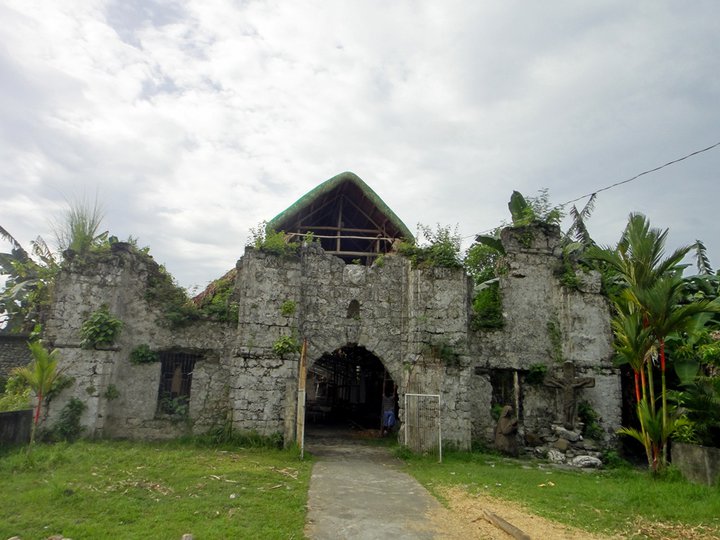Welcome Kabayan!
Feel free to browse around for photos, stories and information all about Naujan.
Kanlungan sa Naujan
Categories
-
Recent Posts
Recent Comments
- Vener EStorque Albufera on Naujan Academy
- Fr Matthew Gibson on San Nicolas de Tolentino, Patron Saint of Naujan
- rhealyngerpacio on The 70 Barangays of Naujan
- Arvin Parin on Inarawan National High School (INHS)
- Aiko Passion Mendoza on Municipal Government Offices
-
Like Us on FB
DISCLAIMER
Naujan.com, unless otherwise noted, do not own the pictures posted in this site. Credits are due to our fellow Naujeños who continue to share their stories, information, and photos to our kababayans everywhere.
-
Background photos by Marlon T. Abuan, Raymund Valenton, JL Reyes, Mon Robles, Norman Belino, Jay Feudo Hernandez and Dr. RM Del Mundo.

Dec
14
2011
 4
4by Cyrus Dan Cañares and Yehlen Parungao with Photos from Melgar A
Five hours away from the hustle and bustle of Metro Manila lies the beautiful island of Oriental Mindoro, where rugged mountain ranges and fertile valleys dominate.
Known to many as the land of Mangyans, tamaraws, and Mt. Halcon, Oriental Mindoro is separated from Batangas City by the Tablas Strait (It is actually separated by Verde Passage not Tablas Strait, Tablas Strait separates Mindoro and Romblon-Ed). It occupies the Eastern part of Mindoro, the second largest island in Southern Luzon. The mountain range of Halcon divides Oriental from Occidental Mindoro, which occupies the Western part of the island.
We arrived in this island by accident. The weather was bad and we did not know anyone but ourselves. We only knew two things: that we’re not going to make it to Romblon and Boracay (our original destinations) and that we’ll have difficulty enjoying this travel. The former was correct but we’re glad to know that the latter was definitely wrong.
How To Get There
Jam Liner in Buendia takes travelers to Batangas City pier for P111. The air-conditioned bus has cozy seats and a TV set installed so you won’t notice the three-hour drive.
From the pier, you can take a Roll-on Roll-off (“Roro”) vessel for P91. Until you reach Mindoro, expect two hours of seeing nothing but water. Amenities include comfort rooms, TV sets, and a cafeteria. But if you want a faster trip, you can take Supercat. This sea craft is way smaller than the Roro but is quicker at 45 minutes for P220. For those who easily get seasick, you might as well take some Bonamine tablets before you sail.
Unlike other popular vacation spots, Oriental Mindoro is not swarmed by thousands of tourists. Some Mindoreños were actually surprised when we told them that we’re doing a travel story on Oriental Mindoro. It was easy to understand their reaction. You see, the province is yet to be developed into a prime tourism site. Given a little time and help from the government, we are sure that Oriental Mindoro would be the next big thing when it comes to the country’s tourism.
If you love to travel but hate to go with the flow of tourist masses, Oriental Mindoro is just the place for you. Just be sure not to go there during the rainy season because some roads become impossible.
Hospitality At Its Best
Contrary to popular belief, the inhabitants of Mindoro are not purely Mangyans. The Mangyan tribes are only a small part of the population and are mostly found in the remote parts of the province (usually upland). Oriental Mindoro is populated by Batanguenos who speak Tagalog. In time, the people of Mindoro called themselves Mindoreños.
Mindoreños adhere to the Filipino value of hospitality. They just have an answer to any of the needs of travelers like us. From the local government officials to the ordinary citizens, they’re all ready to give you a hand. Not only are they friendly and hospitable, all of them are proud to be Mindoreños. They keep on telling us good things about their hometown.
Calapan: Gateway City
Exactly 45 kilometers South of Batangas, Calapan is the only city in Oriental Mindoro. It is home to Calapan Pier—Mindoro’s gateway to Batangas and to the Southern part of the country.
Roaming the city gives you an impression that it is indeed Oriental Mindoro’s capital. Establishments like Jollibee and Chowking can be found at the heart of the city, same with shopping malls, rural banks, and schools. There are also hospitals and health services in cases of emergency and accident.
Communication is not a problem in Calapan. There are Internet cafés for those who can’t live without checking their e-mails. For those who need to make an important call, phone booths are accessible. For text enthusiasts, signal is generally good for Smart and Globe users.
Calapan is also a good entry point to almost all the municipalities of Oriental Mindoro. Inside the pier, there are FX and shuttle busses that transport passengers to the Southern part of Oriental Mindoro—Naujan, Victoria, Socorro, Pola, Pinamalayan, Gloria, Bansud, Bongabong, Roxas (gateway to Boracay), Mansalay, and Bulalacao—for P200 or less.
Outside the pier, there are jeepneys and tricycles that bring passengers to the Northern part of the province—Baco, San Teodoro, and Puerto Galera—for P50 or less. Since the road going north is rough, trips are until 3 p.m. only.
Lodging is also not a problem in Calapan. The city has over 20 lodging houses waiting to accommodate travelers. The passengers’ tourist assistance center recommended to us the Morning Breeze Lodge. The P200 we paid for the lodging was not exorbitant for our 24-hour stay.
Virgin Treasures of Naujan
From Calapan, we went to Naujan through a 30-minute jeepney ride. Boundless greeneries and fresh air greeted us as we went into Naujan. We are not exaggerating, but the air reminded us of lavender. We breathed in all the air we could knowing that there was nothing like it in Manila.
After the short trip we went straight to the town’s city hall. It is located in front of the town plaza adjacent to the Catholic Church. The place was unbelievably quiet, but its stillness was not eerie like that of a ghost town. Rather, it was serene and peaceful—genuine probinsiya.
Upon the instruction of the municipality tourism officer, we went to talk to Mayor Norberto M. Mendoza. With him, we experienced our first taste of Mindoreño hospitality as he offered us dinuguan, puto, and a bottle of mineral water. We talked and joked about a lot of things—politics, education, and even today’s youth.
After that, the mayor asked one of his employees to bring us to Emerald Isle Beach Resort where we would spend the night.
Emerald Isle is located at Estrella (where three other beaches can be found). We arrived there at around 3 p.m.; we rested for a while before going to the Simbahang Bato. Simbahang Bato is located at Bancuro. We reached the supposed-to-be 30-minute-ride destination after an hour’s romance with rough travel.
The oldest church in the province of Naujan, Simbahang Bato is known for its architectural structure. It is made of adobe and sea corals and houses another church, thus earning the title “a church within a church.”
Legend has it that gold is buried inside the Simbahang Bato. Excavation had been done before, but the officials of Naujan stopped it.Going home, Kuya Amor (the tricycle driver) invited us to have dinner in his cousins’ house. We learned that they were celebrating the feast day of their patron, St. Augustine. Shy and bewildered, we accepted the offer and met his cousins, who turned out to be the owners of the beach resort where we were staying. We wolfed on leche flan, relienong bangus, inihaw na tilapia, and something that tasted like tocino. We were deeply moved by the generosity of their family. We talked about many things, one of which is the endangerment of tamaraws in Mindoro. After an hour, we left with heavy tummies. We immediately rested in complete darkness as the bad weather had cut power.
Motorbike to Socorro
The following day we went to Naujan public market—where vehicles going to Calapan and other places in Naujan can be found. The drivers told us that the most comfortable way to go to Lakeview Park in Socorro was to rent a motorbike (for P400) as the road to Socorro, which is 45 kilometers away from Naujan, is rough.
True enough, we experienced bumps at the back of Manong Fred’s motorbike. Many people stared at us as like we were celebrities. (We tried to wave but failed. We were to embarrassed to do so.)
The majestic sight of Mt. Halcon was a bonus for our trip. The air on our faces made us fall in love with Oriental Mindoro even more. For a moment there, we fantasized being stars in Forever. After 30 minutes we reached Lakeview Park. There we saw the top of Naujan Lake, the biggest body of water in Naujan.
Going home, Manong Fred gave us another bonus: he took us to Papangkil Cove. He told us that it used to be a watchtower of Mindo-reños from the Moros. If the road going to the Simbahang Bato was difficult, this one was the worst. It was like touring the moon (for its bumps and unbelievably deep craters) on a motorbike, but we survived it anyhow.
Manong Fred kept on telling us about Oriental Mindoro, such as who they (Mindoreños) are going to vote for in the 2004 election (they favor Raul Roco and Noli de Castro over GMA), who owns which beautiful house, what is the name of this mountain, and things like that.
At times, we asked Manong Fred for a stopover when we saw beautiful scenery, like the mangrove plantation owned by an Australian immigrant and the beautiful rock bridge over a serene lake. The bridge can only accommodate motorbikes and tricycles one at a time.
Reaching Lumangbayan (now called Melgar B) we couldn’t help but express our amazement—small houses surround the beautiful lake. Manong Fred told us that Marinduque could be reached within two hours on a boat. People greeted us with their smiles as we went closer to Papangkil Cove, making it more obvious that only a few travelers have visited the place.
Finally, we reached Papangkil Cove. Huge rock formations invite climbers. We removed our slippers and let the water touch our tired little feet. The water was cool and the sand was soft. Teenagers were swimming, making us envious. But then, we reminded ourselves that we would have one whole day at Puerto Galera.
Puerto Galera: Mindoro’s Little Baguio
From Naujan we went back to Calapan and rode a jeepney going to Puerto Galera. We later realized why it is called the Baguio of Oriental Mindoro—it has zigzag and narrow roads at Malimbo Mountain. Twenty minutes before we arrived, we could see the white sand of the beaches in Puerto Galera. Our excitement grew stronger as we saw the blue waters surrounding the island.
It is said that in 1574, Juan de Salcedo landed at the bay of Puerto Galera. From then on, the bay was used as a refilling station for Spanish Galleons. So, it was named Puerto de Galera or the Port of Galleons.
Now, the white sand beaches of Puerto Galera have been turned into a prime tourist destination. Hundreds of resorts and restaurants crowd at the beachfront. Lodging houses go as low as P500 for a single fan room and P700 for air-con rooms (with a television set) on an off-peak season. We learned that the prices of rooms double or sometimes triple during peak seasons (Chirstmas, Holy Week, summer vacation).
Dining was never a problem in Puerto. Everything was moderately priced—from hamburgers to banana shakes. For fine dining, check out Buena Lynnes Restaurant located at White Beach. It offers great tasting Hungarian cuisine. We highly recommend Goulash (Hungarian meat stew) which is soft beef cuts sautéed in butter and topped with melted cheese.
For P600, you can rent a motorboat and tour the shorelines of Puerto Galera. The package also includes snorkeling at Long Beach, where you can explore the coral reefs and feed tropical fishes.
Going Home
When it was time for us to leave, we felt sad. We wanted to stay for another day, but our empty pockets screamed it was impossible. Going home was not a problem. There were boats that ferry passengers back to Batangas City pier for only P120. Trips are until 4 p.m.
This coming March, before our practicum, we promise ourselves to go to Boracay. But if fate intervenes again and brought us back to Oriental Mindoro, we are more than ready to accept Oriental Mindoro’s invitation. After all, who can resist the lavender-ish air of Naujan?
Fate Brought Us Here
It was perfectly planned out: on October 27 we’re living Manila for a one week stay in Romblon, to do some traveling, and then go to Boracay, get a tan, enjoy the sun and the sand, and have some fun. But changes were made. We left three days earlier. Before we knew it, we found ourselves at the ticketing booth of Pier 8 at the Manila North Harbor.
So is it really goodbye Manila and hello Romblon? We didn’t think so. At the ticketing office we learned that the boat would bring us to Romblon was not leaving until 5 p.m. the following day. The officer told us that we should have called their office first, a lesson that we learned the hard way.
Our mindset was ready, so instead of going home we went to Buendia and took a bus. We were going to Batangas. After three and a half hours, at exactly 11 p.m., we reached the Batangas City pier. We were greeted by a group of tinderos. One woman asked wher we were giong. We told her that we’re going to Romblon. What she told us made our knees weak—the boat that would have taken us to Romblon left six hours ago. The only available trip for that night was the one going to Calapan. We asked her if from Calapan we could go to Romblon. She answered, yes.
After thinking hard (and admitting that we were two lousy travelers), we decided to take the boat to Calapan without even bothering to know where and what kind of place it is. After all, we only needed to know one thing: that from Calapan we could sail to Romblon and Boracay.
After two hours in the boat, we reached Calapan. There it was—the billboard. It read: Welcome to Oriental Mindoro, the land of Mangyans, Tamaraw, and Mt. Halcon. What on earth are we doing in Oriental Mindoro?
(Taken from the Official publication of Colegio de San Juan de Letran’s The Lance.)
4 Comments for Exploring Oriental Mindoro
Rachelle Guevarra Villao Gordon
July 9, 2012, 12:11 am
July 9, 2012, 12:11 am
Hi there,
This website of yours is so refreshing, reminising the old days..
I love the fiesta in Naujan, a lot of so warm and caring people around. Not to mention, most of them are your kins, family. But it was a nice experience to have family everywhere you go.
My parents are born from Oriental Mindoro and my mother and all her family are Naujeno’s, our family is one of the old clans in Naujan.
Im the daughter of lthe late, Gloria Leonida Guevarra, married to Isidro Atienza Villao.
It”s amazing how the place has changed, last time I visited was 3 weeks ago, and now Im back to Sydney, Australia where I reside with my husband.
Definitely a place to suggest for tourism, and recreation.
It was really nice of you to put up an article or a blog like this, most of the members you had on your FB, are my relatives. Ylagan, Guevarra, Gutierrez, Leonida, and Dinglasan..,
Anyhow, hoping to view more articles, and stories about this place and perhaps photos to share on your blog.
Regards and more frutitful adventures to you.
Ta,
Rachel
I
Mar
September 1, 2014, 7:24 pm
September 1, 2014, 7:24 pm
Just a correction in the beginning of this entry. The body of water separating Oriental Mindoro and Batangas is the Verde Island Passage. Tablas Strait separates Mindoro from Tablas Island of Romblon. Thanks for your nice website.
jaime
October 14, 2014, 5:56 am
October 14, 2014, 5:56 am
in your exploration, you didn’t mention kung ano ikinabubuhay ng mga taga mindoro.



